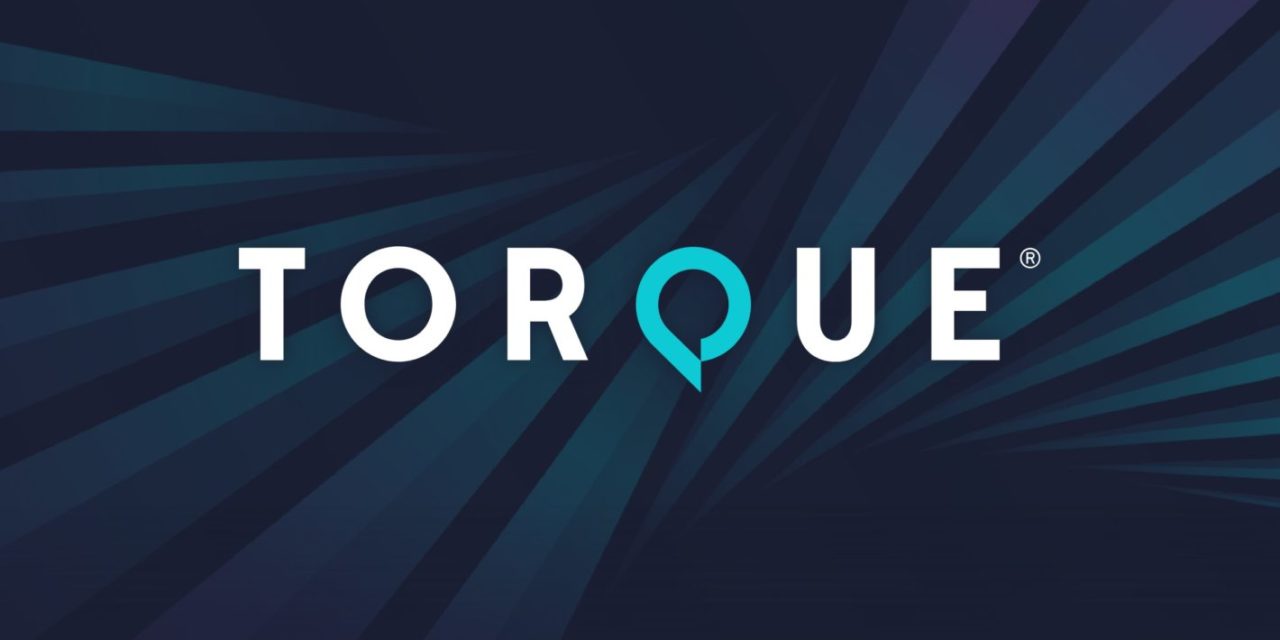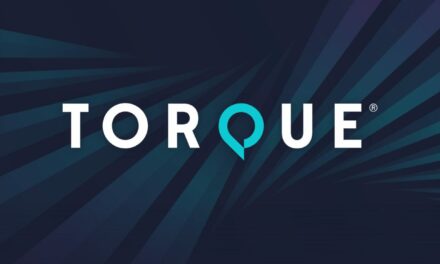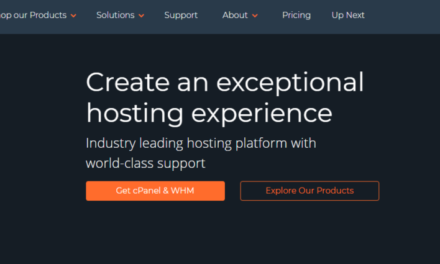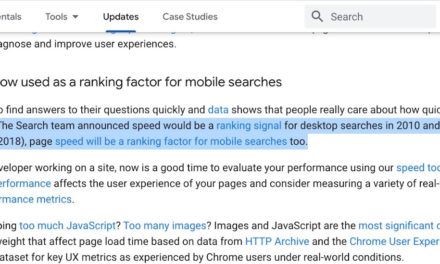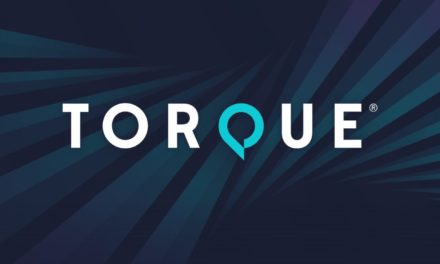Welcome to Press This, the WordPress community podcast from WMR. Here host David Vogelpohl sits down with guests from around the community to talk about the biggest issues facing WordPress developers. The following is a transcription of the original recording.
David Vogelpohl: Hello everyone and welcome to Press This the WordPress community podcasts on WMR. This is your host, David Vogel Paul, I support the WordPress community through my role at WP Engine, and I love to bring the best of the community to you hear every week on press this as a reminder, you can find me on Twitter @wpdavidv, or you can subscribe to press this on iTunes, iHeartRadio, Spotify, or download the latest episodes at wmr.fm. In this episode we’re going to be talking about a really popular topic particularly among WordPress developers agencies and freelancers. And that is what it takes to grow a plugin business from zero very specifically here from zero to 25,000 in monthly recurring revenue or MRR joining us for that conversation today is Mr. Adrian Tobey, Adrian Welcome to Press This.
Adrian Tobey: Hi David thanks for having me on the show.
DV: I’m so glad to have you here for those listening with Adrian is going to talk about today. His his experience is running and being part of a popular CRM and marketing automation plugin groundhog with two G’s if you’re following at home at Adrian is going to talk about his strategies for pricing retention lead generation and controlling cost, all within the context of a plugin business, Adrian to kick us off first question I asked every yes I’ll also ask you, what is your WordPress origin story When was the first time you used WordPress.
AT: So my I essentially grew up in digital marketing, marketing automation. It’s the family business as it happens. So when I was young. I’m currently 23 years old and when I was around 14 in between 13 and 14 years old, my dad ran a digital marketing training organization here in Canada ended the United States, what we would do is we would essentially travel to conference and boardrooms and hotels around the country. And we would fill the room with 30 to 60 people and we would train search engine optimization tactics. This was a feasible business model at the time because it was much easier to rank on Google, than it is today just you know get a couple backlinks from domain authority. Some, some user experience optimizations on the website and you are pretty much good to go. It’s obviously a lot more complex than that. Today, but that’s essentially where I started as we would go around and my dad would train and I’d sit the back of the room and I would hand out order forms and collect workbooks in front of microphone around the room to people who had questions.
DV: And did you get involved with WordPress as part of these activities was that like your first experience with WordPress.
AT: Yes. So, eventually the conversation plegable how do you actually meant all of these tactics that they were learning was like well you use WordPress and you install Yoast or you install any of the other search engine optimization plugins and I would have ended up doing like the tech support for people in the room who couldn’t figure out how to do that so I logged into their WordPress site and I’m going to install these plugins, and then inevitably it became unfeasible to train these people, because it just got too complex so that’s when a digital marketing agency kind of rose from the training business and it turned into a full done for you agency, I ended up working full time with my with my family in that agency while doing University part time I would build websites to design I would implement marketing automation systems with tools like Infusionsoft with that and Active Campaign. And that was kind of my day to day from 2015 till 2018, where I eventually left that to start my WordPress clothing company.
DV: So you ultimately kind of went beyond that kind of training and learning WordPress and that kind of word agency type role there the family business love the family business connection. You’ve got a groundhog day we’re talking about the strategies around groundhog but if you could just real briefly tell us about Groundhog.
AT: So Groundhog is a WordPress plugin that you install on your site and it includes CRM and marketing automation features that you would find with Infusionsoft Active Campaign HubSpot except it is entirely self hosted on your WordPress website there’s no software as a service component, which means that you own all of your data you have full control over everything. There’s no censorship that happens or anything like that so you, it just gives businesses, the ability to have more control over their marketing systems and processes versus having to go to a software service and also allows for much easier integration with all of your favorite WordPress tools. So, it’s a lot easier to integrate groundhog with something like lifter LMS than it would be if you were trying to integrate lifter LMS Infusionsoft or active campaign.
DV: So, you talk about here as we think about like the topic at hand is growing. Is this like a groundhog day it’s really interesting to hear about you kind of connecting the marketing automation, focus, plugin back to the challenges you’re having and educating and a lot of folks have landed in similar places we’re creating their products I’m sure there’s people that run freelance agency businesses today that are thinking geez if I just had a tool. I can do this thing I think my job so much easier and maybe other people might like that, as people think about that they think about building a healthy business they’ll often think about monthly or annually recurring ease for that. And you kind of talk about your journey of going from kind of zero to 25 K and I’m guessing beyond an MRI or. Was that your goal, the beginning Did you say like, I really want to drive up the recurring revenue, and 25,000 is kind of my, my target that you’ve walked into knowing to figure that out along the way.
AT: It is the concept of monthly recurring revenue is, is something that I developed over time. Originally when, when I started groundhog was to solve a lot of problems for the agency market specifically, things like being able to just templatized your strategies and making all of the data and information portable because one of the problems that agencies have is they have to reset up everything in all the different software’s every time that you want to eliminate that to some point. So, I wanted to be able originally to just give it and get it in the hands of as many people as possible. It was more about volume than. Then, let’s say, not necessarily quality but it was it was about making money on volume instead of making money, like with premium pricing beginning because I thought that’s what would make it more, because, because it’s a self hosted product our costs are not the same as let’s say, a large software service organization so in the beginning, you know I made it, like dirt cheap and incredibly inexpensive, and it is a freemium our model is free and so we have a free version on the wordpress.org repository. And I just packed so much value into the free version, and basically made zero attempts to get anybody to buy anything, which is not really the great way, a great way to build MRR which I learned, because I just wanted to see that active insult. I wanted to see it grow like super aspirational like 60 or 70,000, which by the way right now we’re around 3000 in terms of the active installs, but there are plugins that have 5 million active installs that don’t make any money. Right, so I went to, or I found myself a bunch of mentors and they shared with me some some valuable insights on what actually makes a software company worth running in the first place, and how do you actually add value to the marketplace and I should mention by the way that our dirt cheap pricing and the concept of doing volume rather than premium pricing actually just ended up backfiring and we got almost zero customers as a result of that, So lots of, lots to unpack there.
DV: It sounds like in the beginning. You’re obviously earlier your career in general but obviously also likely early in your product creating career, you’re kind of figuring out as you go. And so you’re thinking at the time what volume is on I’m gonna hear it. I’m gonna pack as much value into the free to get adoption, and somehow parlay that into paying customers. So they’re like along the way. You were not having success with the financial side, and then you said, Well, look, I really want to focus on quality not quantity, And I’m guessing in that quality, and kind of commanding if you will, you know, higher prices for that which you’re selling. And real quickly before our next break. Did you feel like you weren’t able to invest in the free software you were providing because of the failures on the pro side.
AT: Well so that I mean the problem. We got problems, since we weren’t able to invest in marketing, in order to spur adoption, because we weren’t selling anything. I mean we had sales they were, they were dismal, they were sub, there were sub five figures every single month which is not necessarily enough to reinvest in staff, especially if you’re investing here in North American stuff which charges upwards of like $60 an hour and a lot of cases and also to pay myself I live in Toronto on exactly HCM city
DV: easier kind of like, pardon for DirecTV here it’s kind of like boxed out when you don’t have a healthy business model for a reinvestment in your business, let alone your products Charmy second imagine that also cause you some pain but I want to talk a bit more about the strategies and how you went through this, but we’re going to take a quick break and we’ll be right back.
DV: Everyone welcome back to Press This WordPress community podcast on WMR. This is your host, David Vogelpohl and speaking with Adrian Tobey about building a plugin business from zero to $25,000 in Mr. Hart, Adrian You almost got us there to believe in 25 k. Before the break we were talking about some of the hard knocks you got along the way and managing his business we had an ended there talking about really how having an inferior business model the plugin business can lead to you basically not just products of you that have readily business. So as you kind of got into this journey to say look, I’m going to focus on premium. That’s where I’m going to look at my value and I’m going to earn that share wallet and these customers. How did you go about picking that right price, you talked about the wrong price. Tell me how you went about doing that right.
AT: So, I have to give a shout out to Chris Badgett rlms, who got me an invite to Cabo press which is Chris lemmas event. And I went there and I talked to a whole bunch of people and I shared with them the problem that I was having is like here’s my pricing, I give an incredible amount of value for like this really low cost, which, you know, I, my naivety suggested that that was something that people would find attractive and every single person that I showed that to says that’s too good to be true, and the saying goes, if that’s too good to be true, it probably is so even though it was true the perception from the customer, and from a potential buyer was looking at that and said there’s no way that I can replace something that I am spending $5,000 a year wrong for $200 a year, like that’s just not something that is realistic and setting the absolutely wrong expectation to customers saying that I can in fact do that because they’re so used to spending in this industry for software similar to mine so much more than, than what I am essentially requesting that they pay that there’s a correlation just doesn’t happen. So when I got back from that event, you know, I sat down I’m like, Alright, well, the only possible thing in order to overcome that is to just make it more expensive, and to increase the price in order to increase the perceived value of this product that people are going to be able to say, Okay, well it doesn’t cost 5000 maybe it costs like, you know, maybe a quarter of that. But still, that is a feasible amount of money in order to get the value because of x, y and Zed like cell phones from WordPress like whatever.
DV: you’re kind of framing yourself out in the value conversation, meaning that because your price was so low, and your expectations, it was something like that should cost to have equality, you’re basically defining yourself as To achieve this, least vector of solution without even intending to just because their brain was different. How can I possibly get as much savings in this software because.
AT: Exactly, that’s exactly what was happening and I didn’t even realize it the conversation might be different, or the perception might be different if I had something like utility products there’s technology there’s two kinds of products there’s platforms and then there’s utilities utilities can be subbed out relatively quickly. Something like zap, for example would be like, you know, you just set it up but there’s plenty of other integration companies now so you just swap that out with whatever the cheapest option is you know whatever gets you through the presses result platform products on the other hand like CRMs and something like commerce or something like lifter LMS like those are things that you build critical business systems process on top of, and the perception is that someone cannot cheaply invest in that and get the result that they want so if you’re having a platform products, I will at least my platform product was absolutely framed out of the conversation by, by not charging enough.
DV: It’s interesting to hear you talk about this in the context of platform delivery of products I personally have not heard products classified in that way before, did you develop them together on your own or is this something you’ve picked up over time through those individual relationships with research, but they understand.
AT: I’m sure it’s something that I’ve picked up along the way, although I’m not able to credit, where where I got. I don’t have a lot of original ideas, I just have lots of helpful people surrounding me so.
DV: I like it to be that you’re putting piecing together the ideas by well I’ve often referred to this as I think about this plugin, it’s like tier one and tier two. And I would refer to tier one, as a plugin you build a site around versus the plugin you add to is kind of like your version a little better. So, alright next question, you started with a lot of features in the free product, you had premium options priced for. So you discover these errors in your strategy, raise your price, maybe start to balance your pro features a little differently. So you had an audience before we didn’t have a really an audience that would buy when you made these changes how did you go about finding an audience that would actually.
AT: So, after I think it’s important to touch on how I made, how I made the changes, I ended up actually pulling a lot of features, out of the free plugin, I gave users and I only had maybe 500% users at that point in time, so it’s not like I had a huge fight ahead of me. But I gave them ample notice 30 days and so these are the changes that we’re making in order to ensure that we create a sustainable business that’s going to continue to be able to provide a valuable product. And these are the new prices and I made it, I made a big deal about it so no one was upset that I didn’t make that change. I think that no one was upset. I think I am going to change. I got one email of someone who was upset but everyone else because they framed it in a way that I need to create a sustainable business that’s going to be to find value to you, everyone across the board was fairly happy with that and actually ended up investing a lot of pieces. One of the promotions that I ran ahead of that was essentially said, you know, here’s the pricing that we have now I’m going to change it but if you want to lock in now I will grandfather anyone who wants to buy at this price point and that actually was one of our greatest revenue months ever. I mean, we’d something like $15,000 which is the most I’ve ever seen. In one month I know that’s not that that probably seems like peanuts for a lot of businesses out there for me and you’re one that was a big deal. So that’s that’s that’s how we made that transition and then after that. How did I go about finding people who invest in the new price. Well fortunately I have lots of friends in the WordPress community now and I’ve, one of the, one of my big kind of audience building strategies was just to go and invade other people’s audiences although I say I say invade but most cases I was invited. For example, I’ve mentioned Chris Padgett several times and we have collaborated on many projects and we regularly, speak with each other and talk about strategies and he promotes me in his group and I promote him there’s one motion going on there Michael short from the last add you had on a few or…
AT: Yeah so so both of them have been have been great. We’re have been sending people who are in need of a software like this because the competition gets quite expensive quite quickly.
DV: So what you’re doing here is this part of your strategy is you’re targeting our customers. That could we both would benefit from you helping their customers through our grant. In summary that strategy.
AT: Absolutely that that pretty much sums it up in a nutshell. And then from that we’ve been able to build our content strategy and our organic search strategy like 30% of our site traffic just comes from search for people googling WordPress CRM, and that which is a very popular search term nowadays, then there’s a few new players currently available and you know that jetpack on zero vs CRM so now they have jetpack CRM so there’s a lot of movement in this segment which has enabled, kind of like other businesses are educating the market, and that is in causing an influx and just organic search and word of mouth traffic and that’s kind of how the strategy has been growing from there.
DV: It sounds like you’re able to leverage the skills we picked up early in your career around search marketing as well. I know that again offers and unplugging businesses that are hot and cold and things like search paid search ads. And I think, really it’s really down to the attention they pay or don’t pay to those campaigns that that governs their success but obviously it sounds like you’re you’re a football so leverage that I really love partnering home. Just because, you know, provides an opportunity and in a lot of these folks that are making tools for people to build sites with one of the key challenges we see this a WP Engine and some disarray across the ecosystem I think we’re starting that new site. The first challenge they’re really trying to overcome is to generate revenue and marketing automation plays such a key part in that. I think it’s really clever for you to kind of group up with that are empowering people to build sites, but they need to solve that, you know, kind of fundamental problem which is how do I accelerate revenue here want to dig a little bit more into your strategy, we’re going to take a quick break. We’ll be right back.
DV: Hello everyone welcome back to Press This WordPress community podcast on WMR is your host David Vogelpohl and speaking to Adrian Tobey of groundhog driving a plugin business from zero to 25,000 and Mr. Tobye, right before the break you were explaining a little bit about your partner strategy for finding new customers. That would buy based on pricing model. Search Marketing, you also talked to me before the podcast though, I kinda want to ask you about the support side that relative to sport and other costs that you know can have a lot of put a lot of pressure on the plugin business, how did you keep the cost low on this support and kind of other ancillary costs to providing this technology and service to your customers.
AT: So the vast majority of support happens within the first week of a purchase so if you can get past that, you’re pretty much. Okay, we are able to variously tell exactly how long a average support ticket takes which is around. 25 minutes so if you can, you know, get the cost of whoever’s doing that support to get them on thesis it’s still me. If you can get the cost down of that then you’re pretty much in the black, we’ve been able to create a profitable organization. As of, I think, March of this year, our our our this organization became profitable. So march of 2020, which was a really, really big, big win for us, based on using tools which are open source I mean we use WordPress and use our own software to do all of our marketing and we use Amazon AWS ECS which is again incredibly inexpensive to to communicate with our customers. We use scalable hosting so you know you get what you pay for her or you pay for what you use. So, those kinds of investments, I keep my team fairly lean I have contractors and two people on salary. And I’ve just I mean I’m a boots on the ground ci and I am a technical as well as kind of like a visionary founder I embody both of those skill sets so the original product I built entirely by myself, and in two months. So being one of the being someone who can essentially build and market and communicate and fulfill a lot of the hats in the early days allowed us to save a lot of money. And then continuing into the next year run a profitable organization.
DV: So I heard you talk about going out of your way experience HR hiring practices and hoping that makes sense to talk about the systems you use to provide support. How do you keep support costs relative to how you improve progress.
AT: Well, if you see something recurringly happening in the support queue. Chances are that the user experience, which is creating those support tickets is subpar, so we can you identify in your support queue. Common Questions or recurring questions that have been in some of those are like unavoidable like my emails won’t send out well. Do you have an SMTP service. No, well, you probably need one so how can we overcome that. Well we introduced the requirement to have an SMTP service in the guidance setup like choose which one you want and install it. That is a way that we overcome that arduous question because we’re educating the person as they’re setting up rather than them getting to a point where something’s not working and they don’t know why. So it’s a mix of educating the consumer or the implementer as you’re going through that setup process and we can identify what those questions are through the common ones that we get in the support queue.
DV: I love that such a bread and butter tip is something that’s so obvious but a lot of people do overlook I love how you’ve come full circle because you got the idea for Grandpa, from your to do list from people you’re helping with their websites. The tickets that you would help them solve problems, and then you get your feature ideas from the users of groundhog. And what’s causing them friction in your support queues I love that I’ll tell you, Adrian we do the exact same thing and WP stack rake those tickets, see what’s in there, see what we can add in terms of automation, last question for you if you could only share one piece of advice for someone starting or growing a plugin business, what would it be out of everything you’ve talked about or otherwise, million one thing to tell them why should they remember.
AT: Get it launched. Whatever, whatever you have now if it’s even remotely usable just get it out there and get some market validation. I remember when I released groundhog on WordPress directory. It was, it was, it worked. But it but it’s not nearly as refined, as it is today. And I look back and I, and I see some of the things that I did and I think to myself, what was I thinking, I, here I am. Almost two and a half years later, and we have a fairly good business going that is being able to support my lifestyle, and the lifestyle of my employees and my team, as well as enable the lifestyle of all 3000 businesses around the world. And it just had to start somewhere and we just had to get something out because you know sooner rather than later that market opportunity is going to dry up like WordPress won’t be around forever. I know that and I think everybody in this community knows that
DV: it might it might take 100 years on the path to 50% of the web. So hopefully we’ll see that next years. 2025 was
AT: it the prediction right
DV: yeah I think so. Recently, overtook him COVID sites, the dominant mobile site areas for a little time. It sounds like at the high level, like it’s, it’s, you know, get it launched and get it out there get that back start iterating on it. That will never start until you begin to Sage piece of advice on thank you so much for all this Adrian.
AT: I really appreciate the opportunity to chat.
DV: Awesome, you’d like to learn more about what Adrian is up to you can visit groundhogg.io. Thanks everyone for listening to press this WordPress community podcast on WMR. Again, This has been your host David Vogelpohl. I support the WordPress community through my role in WP Engine.

